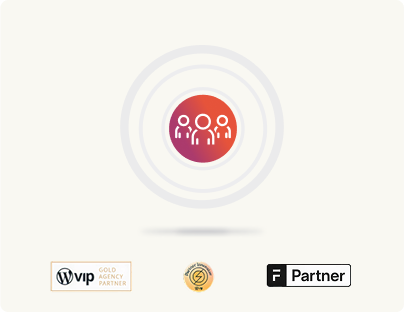Contentful vs WordPress : Multisite functionality
For modern enterprises, managing content across multiple brands, markets, and platforms isn’t a nice-to-have, it’s table stakes. And that makes multisite capability one of the most strategic features in any CMS decision.
Both Contentful and WordPress can support complex digital ecosystems. But their approach to multisite couldn’t be more different.
Setting up multisite setups with Contentful
Contentful, unlike WordPress, doesn’t offer native multisite functionalities. Instead, it relies on custom implementations, APIs, and developer expertise to manage multiple digital properties.
Here’s how Contentful addresses multisite needs.
Space-based architecture
Contentful uses the concept of Spaces to segregate content. Each space acts as a standalone content repository, akin to a “site” in WordPress Multisite.
Custom API management
Developers must create integrations to distribute and manage content across spaces, often requiring additional infrastructure for centralized control.
Centralized content hubs
Contentful can be configured as a central content hub, with different digital properties (e.g., websites, mobile apps) consuming content via the API.
Key considerations
When evaluating Contentful for multisite needs, it’s essential to assess a few technical considerations.
- API-first approach: Since content is delivered through RESTful APIs or GraphQL, and because each space has its own API credentials, you could be looking at management overhead when dealing with multiple spaces.
- Manual content sharing: Content sharing across spaces requires custom coding or third-party integrations, as there’s no built-in mechanism for sharing data between spaces.
- Scaling challenges: Scaling a multisite setup with Contentful often involves increased costs due to pricing based on API usage, space count, and bandwidth.
Common hurdles with Contentful multisite setups
- High developer dependency: Setting up and managing multiple spaces requires extensive development resources.
- Limited automation: Unlike WordPress, there’s no built-in mechanism for global updates or configurations across spaces.
- Cost concerns: Contentful’s pricing model can become expensive for large networks.
Setting up multisite setups with WordPress
WordPress, in contrast, offers native multisite functionality. It was built into core WordPress to support use cases like education networks and publisher ecosystems and has since matured into a robust enterprise-grade feature.
With WordPress Multisite, teams can manage multiple websites from a single installation, streamlining operations, governance, and scaling.
What’s even more powerful is how seamlessly WordPress Multisite works in hybrid or headless environments.
Unified content management with decoupled frontends
In a hybrid or headless WordPress Multisite setup, enterprises can centralize content management across multiple sites while delivering custom, decoupled frontends for each. For example, a global company with regional sites can manage content centrally while tailoring the front-end experience for each region using frameworks like React, Vue, or Angular. Unlike Contentful, which requires custom implementations for multisite capabilities, WordPress provides a ready-to-use multisite framework with API-driven delivery, reducing complexity and time to market.
Scalability for multi-experience strategies
Headless WordPress Multisite seamlessly supports multiexperience strategies, enabling enterprises to deliver consistent yet differentiated experiences across web, mobile, IoT, and other platforms. For example, an enterprise can run a traditional web channel, a mobile app, and an on-premise digital kiosk experience, all powered by the same multisite network with APIs serving tailored content to each channel.
Tailored APIs for each subsite
Each site in a headless WordPress Multisite network can have its own tailored API endpoints, ensuring that each subsite delivers content that is optimized for specific channels (e.g., web, mobile, IoT, or kiosks). Furthermore, these subsites can define their unique API structures and content models, catering to platform-specific needs. APIs can also be designed to serve only the data required by each frontend to minimize bandwidth usage and improve load times. Also, as the enterprise expands to new digital channels, new subsites can be added with tailored APIs for emerging platforms.
If you’re exploring this for your own ecosystem, you might find this guide on setting up WordPress Multisite for multi-brand enterprises useful. It breaks down the architecture and operational thinking behind multisite at scale.
How enterprises bring order to WordPress multisite
What we’ve seen across enterprise projects is that WordPress Multisite becomes especially powerful when combined with a structured, systems-thinking approach.
Think:
- Shared design systems across brands
- Reusable content components
- Central governance, with local autonomy
- Deployment workflows that work across 10, 20, or 100+ sites
We’ve distilled these learnings into a framework that brings structure, predictability, and scale to WordPress Multisite without sacrificing flexibility. You can learn more about that approach via our service page or explore real implementation practices in the OnePress handbook.
The final verdict on multisite functionality
For enterprises looking to scale digital presence across regions, brands, and channels, WordPress provides a clear operational edge. Its native multisite capabilities work out of the box and are extensible enough to handle both monolithic and headless use cases.
Contentful, while flexible, requires a high level of investment, both in developer time and architecture to simulate the same outcomes.
If your goal is to scale content infrastructure without duplicating effort or cost, WordPress offers a future-proof foundation that grows with your ecosystem.







